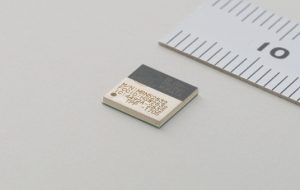Wireless connectivity is the enabler for internet of things (IoT) applications. It provides the ability to place sensor nodes and actuators where they are needed and have them communicate with servers and other nearby devices as soon as they are in place. But wireless connectivity comes in many forms. The choice of network protocol can seem baffling at first but each of them has features that suit different markets and applications. Now that the market for IoT devices is beginning to mature, some of the protocols are also beginning to assume a leadership position, particularly for short-range wireless.
The first choice is that of distance. Devices that are used in buildings can often use short-range networks and take advantage of the greater simplicity and lower power consumption of protocols tuned to this environment. The installer can generally count on nearby gateways being present that can relay data to the internet. Sensors for smart farming or for monitoring utility services need much greater range as any gateway device or base station may be several kilometres away.
In the short-range sector, there are two technologies that are establishing dominant positions in wireless communications. Both benefit from already being mass-market successes in the consumer electronics market. And they continue to enjoy a continuing programme of enhancements.

Figure 1: The choice of network protocol can seem baffling at first but each of them has features that suit different markets and applications.
Although its parent protocol was developed for personal area networks centred on the phone, the creation of Bluetooth Low Energy has opened the door to a much wider range of applications. Previously, IoT devices were faced with a choice of niche protocols such as Zigbee for home automation or 6LowPAN for industrial automation. Bluetooth Low Energy now offers compatibility with 6LowPAN and supports several of the key features originally developed for Zigbee.
One of those features is mesh networking. Bluetooth has had the Scatternet option since 2013, which let nodes switch between master and slave modes to make them more flexible. For example, a smart node might collect data from several simple slave devices and then relay that data onto a smartphone by temporarily acting as a slave. The mesh networking capability now available in Bluetooth makes it possible to extend the range of a single gateway seamlessly by using intermediate nodes as staging points for packets.
Bluetooth 5, launched in the summer of 2016, brought enhancements that include the ability to trade range against the maximum datarate. By using an adaptive protocol, the range can be extended to be around four times higher than that of Bluetooth 4.2 at a datarate of approximately 125kb/s. Assuming line-of-sight conditions outdoors, this range can approach 200m. Alternatively, for devices that are more closely spaced, the maximum datarate can reach as high as 2Mb/s, although packet overhead typically reduces the peak achievable payload datarate to around 1.6Mb/s.

Figure 2: BLE modules like the MBN52832 device can support the most demanding Bluetooth low energy IoT applications
For high-datarate IoT traffic, WiFi now offers a viable option. Transceiver costs have fallen dramatically and support for the protocol makes it possible to use conventional home routers for access to the internet instead of relying on specialised gateways. WiFi, from the start, has been focused on delivering high-bandwidth communication to mobile devices. The availability of the 5GHz band in addition to the 2.4GHz industrial, scientific and medical (ISM) used by the original WiFi protocol, Bluetooth, 6LowPAN and Zigbee provides access to a less congested part of the RF spectrum. This is useful for applications that need continuous high-speed data transfer.
There are now multiple versions of WiFi available. Although many IoT applications, even those that need high bandwidth communication for real-time audio or video, can make use of the older variants of WiFi, it often makes sense to standardise today on the 802.11ac variant. This version caters for multiple antennas to boost aggregate datarates to at least 1Gb/s on the 5GHz band. IoT devices that support 802.11ac will help maintain the maximum possible datarate by allowing the home or office router to make full use of antenna diversity. Falling back to a slower, older protocol can slow down the entire network when the IoT device is active.
Many IoT devices will support both WiFi and Bluetooth as the cost of supporting both is often only marginally higher than that for a WiFi-only transceiver. This can be leveraged to ease tasks such as installation. First, a simple Bluetooth connection to an app hosted by a mobile device can be used to set up the device. Once configured, it can switch to using the WiFi protocol for data transfers.
A further option that has emerged recently is DECT Ultra Low Energy (ULE). It has the advantage over many of the IoT short-range protocols of having dedicated RF spectrum instead of shared access to the 2.4GHz ISM band. DECT ULE’s range can extend as far as 300m outdoors and 50m indoors. The DECT protocol lets multiple gateways cooperate to extend the range of a single network much further than the core 300m. Although DECT was originally developed for wireless telephony, the ULE version provides low-power communication for IoT sensor nodes.
In the short-range environment, the gateway is normally managed by the user. In the low-power wide-area networking (LPWAN) environment, the gateway can be privately owned but access can also be through public networks. A protocol that offers the choice of either is LoRA.
Based on a transceiver design by semiconductor supplier Semtech, LoRA employs unlicensed spectrum and provides users with the option to deploy their own gateways or have their devices communicate with third-party networks. Some cities have deployed networks based on LoRA that are free to access and service providers have appeared that rent access to their gateways.
To avoid interference problems from other users on the same RF band, LoRA uses a spread-spectrum modulation scheme supporting datarates from 300 b/s to 50 kb/s. The range can be up to 10 km and the use of comparatively low frequencies makes it possible to reach devices buried below ground, such as water meters.
Sigfox uses ultra-narrowband transmission to extend its range to as much as 50 km in rural areas. Whereas LoRA is designed to support bidirectional communication, Sigfox is optimised for low-datarate transfers in one direction – usually from the sensor node to the server. Datarates range from 10 b/s to 1 kb/s. Sigfox is not completely unidirectional: the protocol supports acknowledgement packets so the sensor node can determine whether a communication has been received, supporting applications such as security alarms.
One advantage of Sigfox’s focus on one-way data transfers is that it can help preserve power on the sensor node, thus extending battery life. If the node only has to wait for acknowledgements, which are received very quickly after transmission, there is no need for the node to wake on a regular cycle to listen for downlinks from the gateway.
Whereas LoRA provides the option for users to operate their own gateways, all communications on Sigfox pass through the company’s own gateways. Although it has less operational flexibility this has the benefit of providing users with a single supplier that provides network support in a large number of countries.
Cellular connectivity is already widely used for machine-to-machine applications. In recent years, the industry has augmented the basic GPRS offerings with a variety of protocols that support either higher datarates or lower-power operation. A key advantage of cellular connectivity is that operators are able to manage congestion and interference much more readily than is possible with unlicensed spectrum, which improves long-term reliability. The open nature of the protocols themselves provides a rich array of compatible silicon and RF modules.
The first change came with Enhanced Coverage GSM, which improves the ability of cellular signals to reach more distant nodes or connect to buried sensor nodes. EC-GSM can handle signals that are 20 dB weaker than standard GPRS and supports datarates up to 10 kb/s.
The arrival of Long Term Evolution (LTE) has brought with it several options for IoT connectivity, thanks to the 4G protocol’s more efficient use of RF spectrum. The first to arrive was Cat-M, which supports 1Mb/s datarates for both the uplink and downlink using half-duplex communication. Cat-M also provide energy-saving enhancements. Compared to the core LTE protocol used by mobile phones, Cat-M can operate with fewer updates from the base station. The frequency of updates can be reduced to the point where the sensor node only has to wake up every ten minutes or so, which can greatly preserve battery life for devices that monitor slow-changing conditions, such as soil moisture.
Narrowband-IoT (NB-IoT) provides further enhancements to energy efficiency. NB-IoT uses a much narrower transmission band than full LTE:1.4 MHz rather than 20 MHz. This is accompanied by a reduction in transmit power to further improve battery life. In an ongoing process of enhancements, Release 14 of the LTE standard by 3GPP, has further improved efficiency by supporting techniques to allow nodes to disconnect rapidly after a transmission to reduce leakage power. Datarates of 50 kb/s on the downlink and 20 kb/s on the uplink are possible, extending to 50 kb/s if multi-tone signalling is employed for the uplink.
Thanks to the rich selection of protocols suitable for IoT use, whether operating in a short-range or wide-range scenario, developers and integrators can be sure to find one that fits the application. Independent module suppliers such as Murata can advise on which makes sense for each situation and provide solutions based on the best available silicon on the market.







